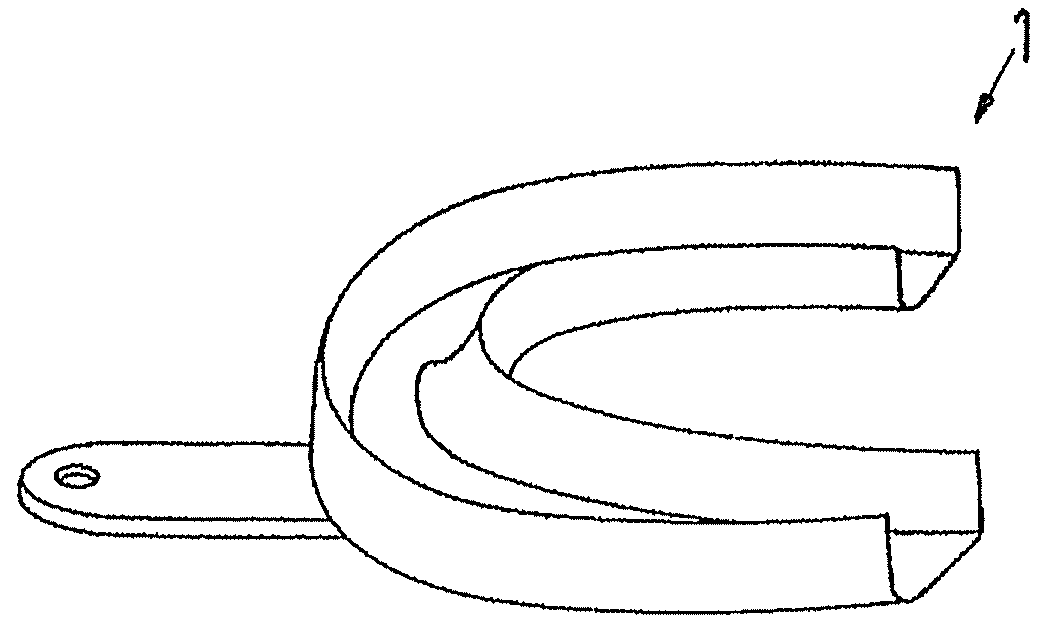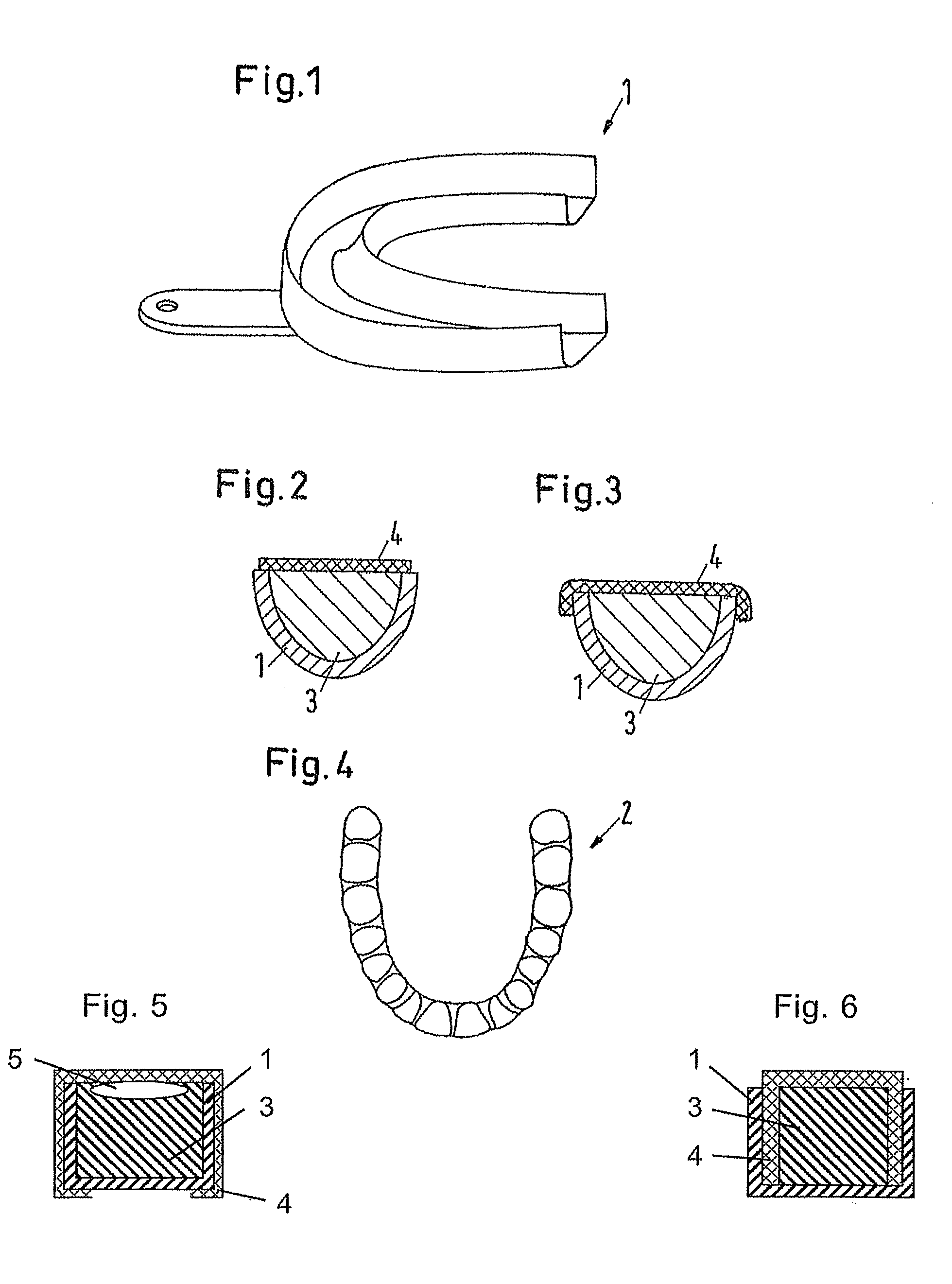Method and Kit for Producing a Dental Product
a technology for producing a dental product and a kit, which is applied in the field of methods and kits for producing dental products, can solve the problems of inconvenient production of a splint or similar dental product intra-orally, unpleasant experience of increasing heat input through a strongly heated splint, and insufficient thickness of pure ena, so as to prevent tearing or biting through the film, facilitate the removal of the film, and the thickness is sufficient
- Summary
- Abstract
- Description
- Claims
- Application Information
AI Technical Summary
Benefits of technology
Problems solved by technology
Method used
Image
Examples
example 1
[0060]In a kneader, 43% by weight of a trimethylsilyl capped polydimethylsiloxane with a viscosity at 20° C. of 2,000,000 mPa·s, 49% by weight of a polyethylene powder (LDPE) with a mean particle size of 17 μm and 8% by weight of a white mineral oil with a viscosity of 200 mPa·s are homogeneously mixed.
[0061]A white, kneadable paste is produced which has a consistency of 24 mm (measured in accordance with ISO 4823). This impression material forms a plastically deformable agent for adapting a film, and due to its tough consistency is can be used as a functional system component in a kit in accordance with the invention for producing a dental product. The impression material is also suitable for the method in accordance with the invention for producing a dental product.
example 2
[0062]In a kneader, 43% by weight of a trimethylsilyl capped polydimethylsiloxane with a viscosity at 20° C. of 1,000,000 mPa·s, 52.5% by weight of a polytetrafluoroethylene powder (PTFE) with a mean particle size of 12 μm and 4.5% by weight of a white mineral oil with a viscosity of 200 mPa·s are homogeneously mixed.
[0063]A white, kneadable paste is produced which has a consistency of 24 mm (measured in accordance with ISO 4823). This impression material forms a plastically deformable agent for adapting a film, and due to its tough consistency and its high separating effect with regard to the thermoplastic splint plastic (EVA) is can be used as a functional system component in a kit and / or the method in accordance with the invention for producing a dental product.
example 3
[0064]In a kneader, 60% by weight of a trimethylsilyl capped polydimethylsiloxane with a viscosity at 20° C. of 1,000,000 mPa·s and 40% by weight of a polypropylene powder (PP) with a mean particle size of 38 μm are homogeneously mixed.
[0065]A white, kneadable paste is produced which has a consistency of 22 mm (measured in accordance with ISO 4823). This impression material forms a plastically deformable agent for adapting a film, and due to its tough consistency and its high degree of dimensional stability as well as its low tendency to oil separation while being stored, it can be used as a functional system component in a kit in accordance with the invention for producing a dental product and / or for the method in accordance with the invention.
2. Thermoplastic Material (Blank Mold as a Preliminary Step of an Individual Thermoplastic Dental Product)
[0066]A blank mold (pre-form), as will be described in the following examples, can, for example, be a film-like element made of thermopl...
PUM
 Login to View More
Login to View More Abstract
Description
Claims
Application Information
 Login to View More
Login to View More - R&D
- Intellectual Property
- Life Sciences
- Materials
- Tech Scout
- Unparalleled Data Quality
- Higher Quality Content
- 60% Fewer Hallucinations
Browse by: Latest US Patents, China's latest patents, Technical Efficacy Thesaurus, Application Domain, Technology Topic, Popular Technical Reports.
© 2025 PatSnap. All rights reserved.Legal|Privacy policy|Modern Slavery Act Transparency Statement|Sitemap|About US| Contact US: help@patsnap.com


